Into the Fire
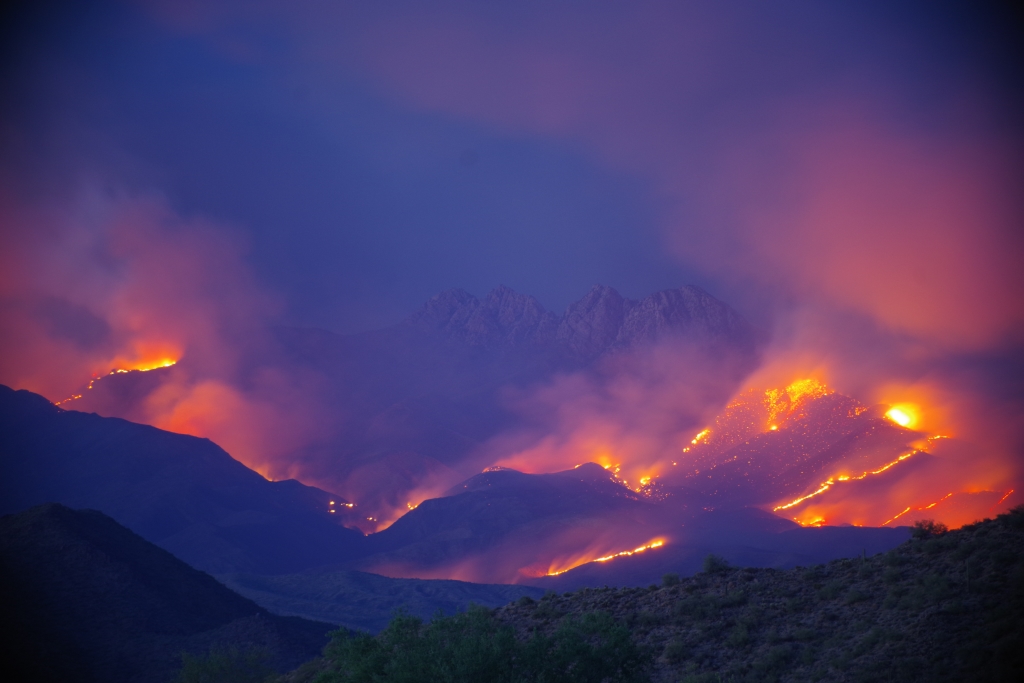
Writer Joseph J. Airdo // Photography by Mark E. Anderson
Beautiful and terrible — two extreme emotions of equal intensity pulling in opposite directions. This is how photographer Mark E. Anderson describes his first encounter with wildfire imagery, a tension that would eventually draw him deep into the heart of Arizona’s most devastating natural phenomena. As Los Angeles has grappled with an unprecedented surge of wildfires since the beginning of this year, Anderson’s powerful photographs remind us that these fierce displays of nature’s might are both awesome and humbling.
Standing in what he calls “the belly of the beast,” Anderson has witnessed extraordinary moments that few will ever see: entire trees igniting in instant infernos, flames reaching 150 feet into the desert sky, and even saguaro cacti exploding in the intense heat. Yet his approach to documenting these events goes beyond mere spectacle. Through his lens, we witness both destruction and the promise of renewal, a cycle as old as the Southwest itself.
Anderson’s journey into wildfire photography began unexpectedly at a brush fire along the Gila River in Kearny, Arizona. What started as curiosity has evolved into a mission to document these increasingly frequent natural disasters with respect and purpose. His images, largely untouched in post-processing, tell stories of nature’s raw power, firefighters’ unwavering courage and the resilience of both landscapes and communities in the aftermath of devastation.
In this collection of photographs, Anderson invites us to witness Arizona’s wildfires from a perspective few ever experience. His work challenges us to consider our relationship with fire — a force that has shaped the Southwest’s landscapes for millennia and continues to transform them today, often accelerated by human activity and changing climate patterns. These images serve as both a window into nature’s fury and a reminder of our responsibility to protect the wild places we call home.
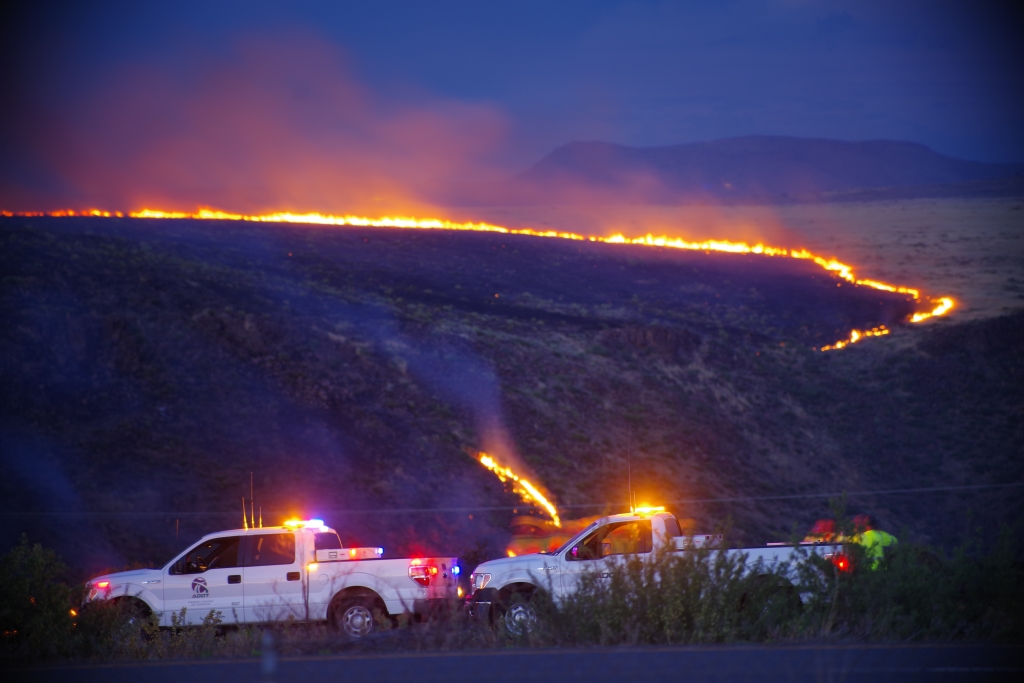








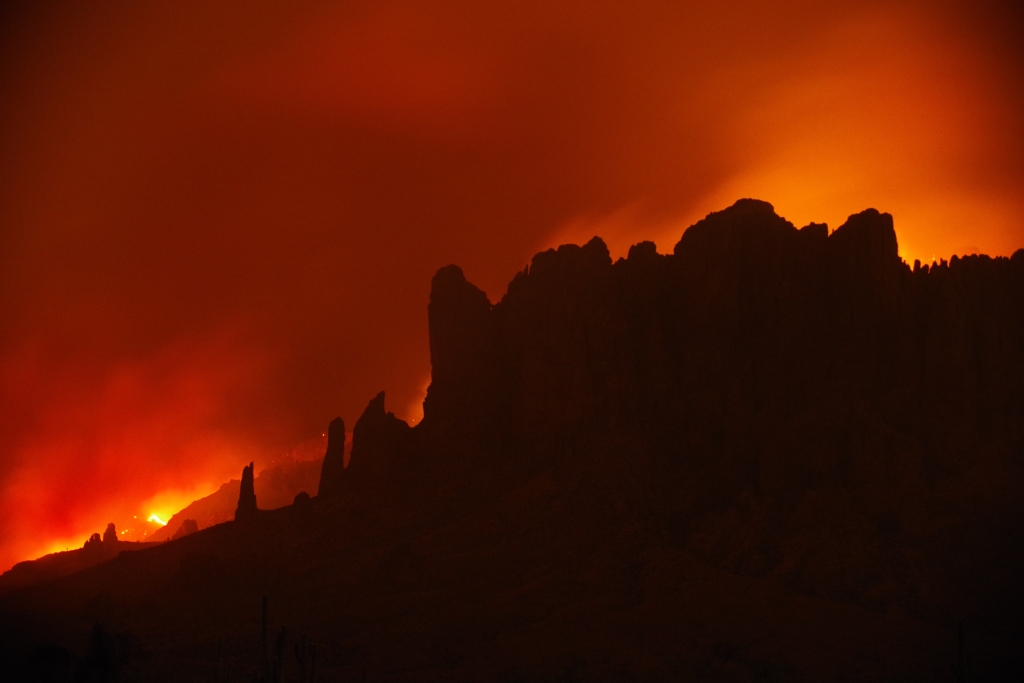


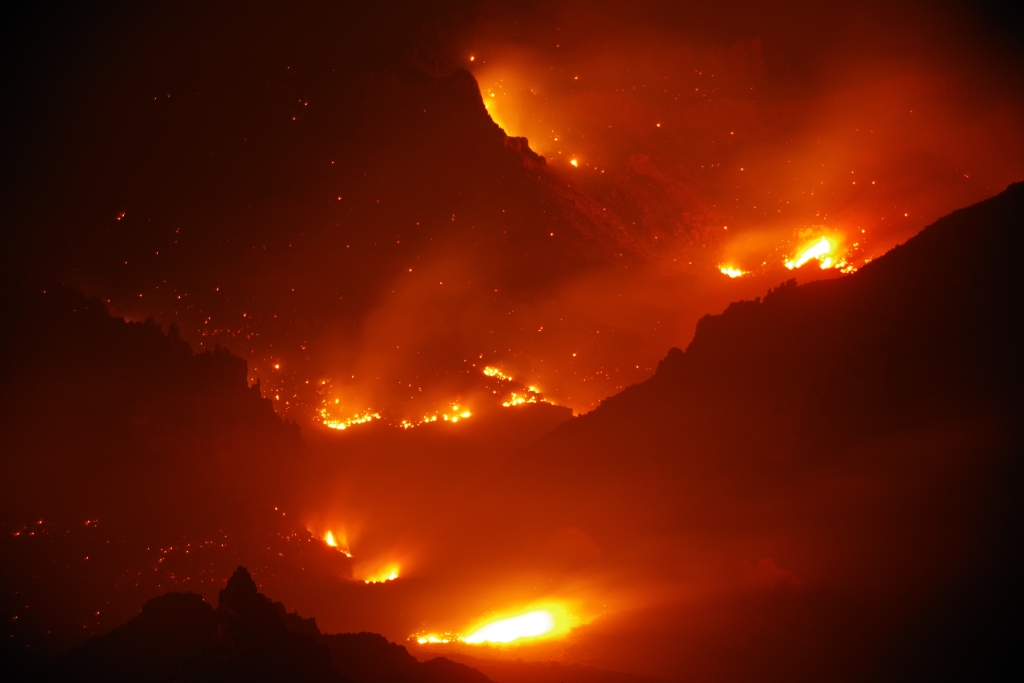


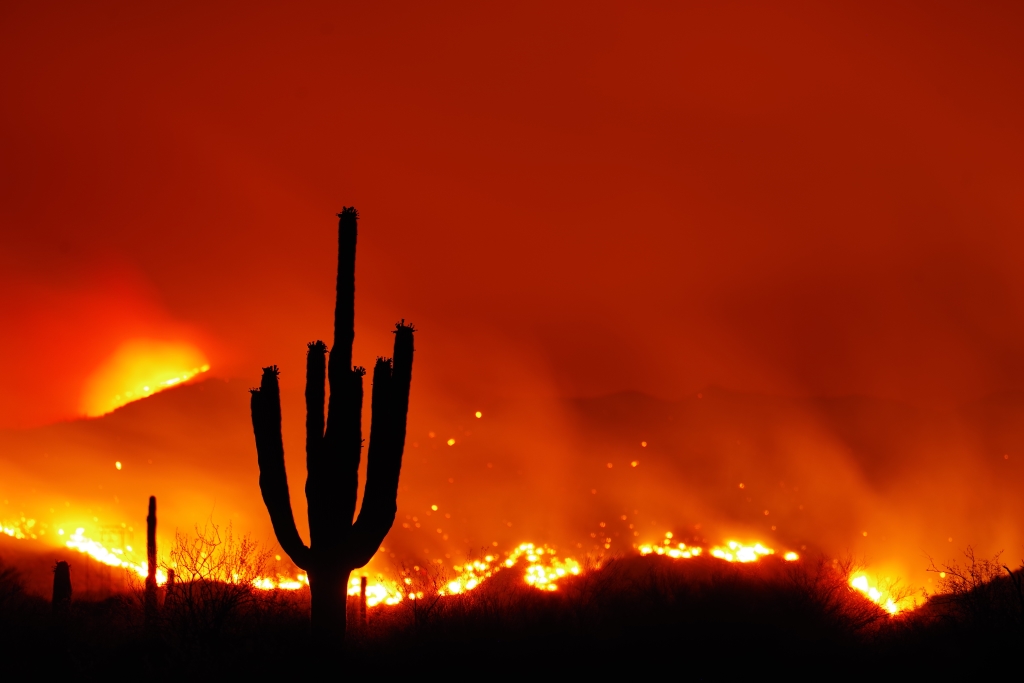





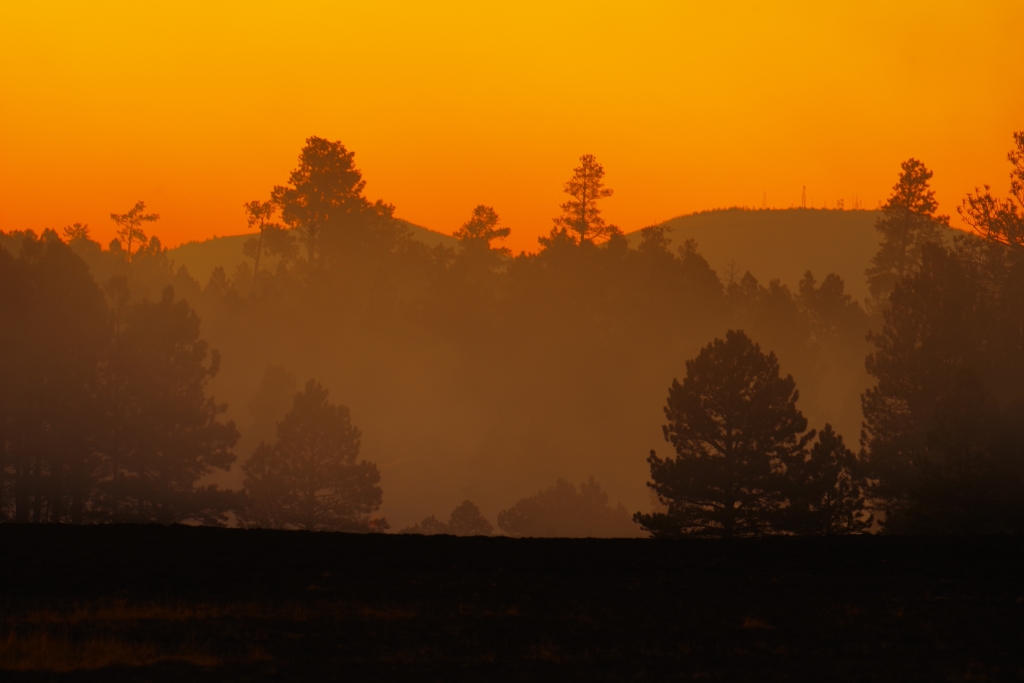





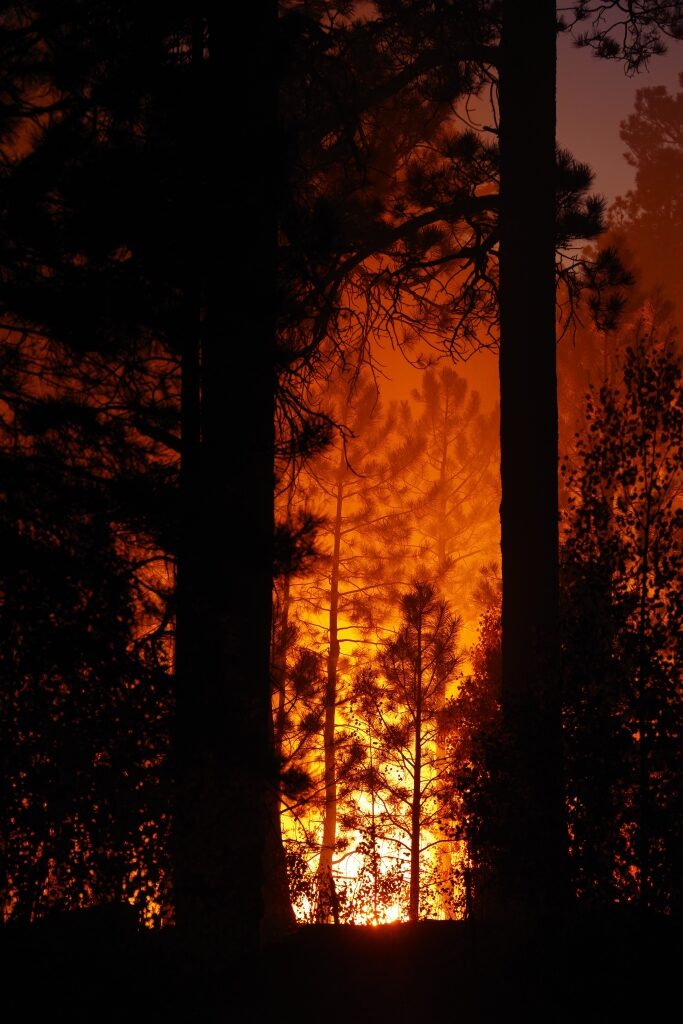


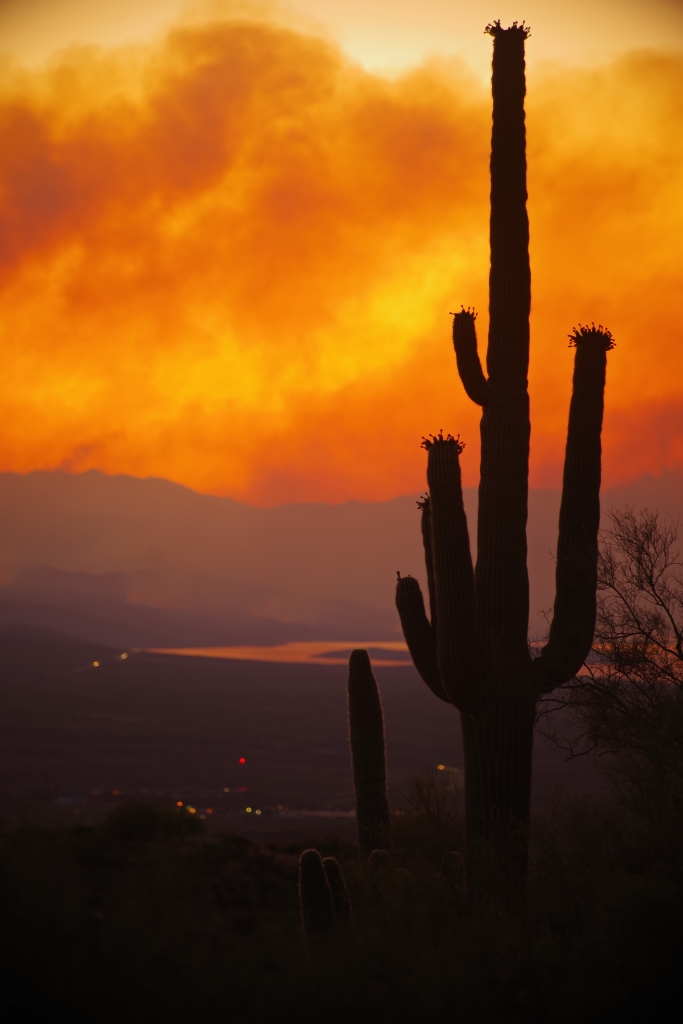


About the Photographer
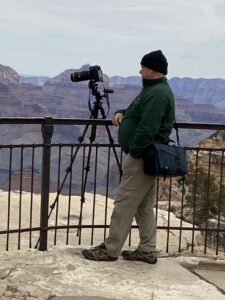


For Mark E. Anderson, photography is more than just capturing images — it’s a spiritual journey that brings him closer to his faith. Whether he’s documenting the raw power of wildfires or the serene beauty of desert landscapes, Anderson finds himself drawing nearer to the divine.
“As a believer in Jesus, I feel closest to Him when I’m out in this vast, beautiful world He created,” he says. “It humbles me. Out there, I gain true perspective on life.”
An endless explorer at heart, Anderson spends countless hours researching and discovering new territories to photograph. His process often begins with virtual reconnaissance, using tools like Google Earth to scout potential locations. He can spend hours digitally flying over unexplored territories, searching for hidden gems worth visiting with his camera. This methodical approach, combined with his willingness to venture off the beaten path, has allowed him to capture some of Arizona’s most striking and lesser-known vistas.
As an FAA-certified Part 107 drone pilot, Anderson brings both ground-level and aerial perspectives to his work. Yet regardless of his vantage point, his philosophy remains steadfast: show things exactly as they are. His images come largely unedited and untouched, reflecting his commitment to authenticity.
“While there are talented artists working with AI and heavy editing, my goal is different,” Anderson explains. “I want to show people what I actually witnessed, what they could see with their own eyes if they were there.”
This dedication to truth in imagery, combined with his explorer’s spirit and deep spiritual connection to the landscape, makes Anderson’s work a powerful testament to the natural beauty of the Southwest. Through his lens, we’re invited to see the world as he does — a vast canvas of divine creation, waiting to be discovered and shared.
Fighting Fire with Forethought
Wildfire preparedness isn’t just about responding when smoke is in the air — it’s about taking action before fire threatens your home. Rural Metro Fire and Arizona Foothills 911 encourage homeowners to become part of the Firewise movement, a national program that’s gaining traction in our region.
“Properly prepared homes give firefighters a better and safer environment to protect the property,” explains Shawn Gilleland, public information officer for Rural Metro Fire and Arizona Foothills 911. “Homeowners who take the time to maintain their property in accordance with Firewise protocol stand a greater chance of having their home survive a wildfire.”
The key is identifying what can “carry” fire to your home. Common fuel sources include dead grasses like globe chamomile and buffalo grass, fallen mesquite branches and their understory, and non-native trees. These can create “ladder fuels” that elevate fire from the ground to your home’s eaves or roofline. Homes positioned uphill face greater risk, as fire burns faster uphill. Wind channels and common wind directions also influence fire behavior and should factor into your prevention strategy.
A professional Firewise assessment will identify areas where debris accumulates: rooftops, gutters, corners around the house, and spots where blowing embers could settle and smolder. Often-overlooked entry points include exterior attic vents, where large-gauge screens may allow ember penetration. Adding small-gauge metal mesh screens provides crucial protection. Another vulnerability: weep holes at the base of exterior walls. While stucco resists burning, heat infiltrating these holes can ignite insulation and materials behind the wall.
Prevention steps include:
- Creating a 5-foot zone around your home free of flammable materials
- Storing patio furniture when not in use
- Moving firewood stacks 30 feet from structures
- Keeping ornamental plants well-watered
- Regularly clearing debris from roofs and gutters
This approach is already showing promise locally. Rural Metro recently helped two Rio Verde communities achieve Firewise recognition, and the program has just launched in Carefree. California has passed legislation requiring insurance companies to recognize Firewise communities for policy discounts — a model Arizona may follow.
Want to protect your property? Schedule a Firewise assessment through Rural Metro Fire or your local fire agency to identify specific risks and solutions for your home.

